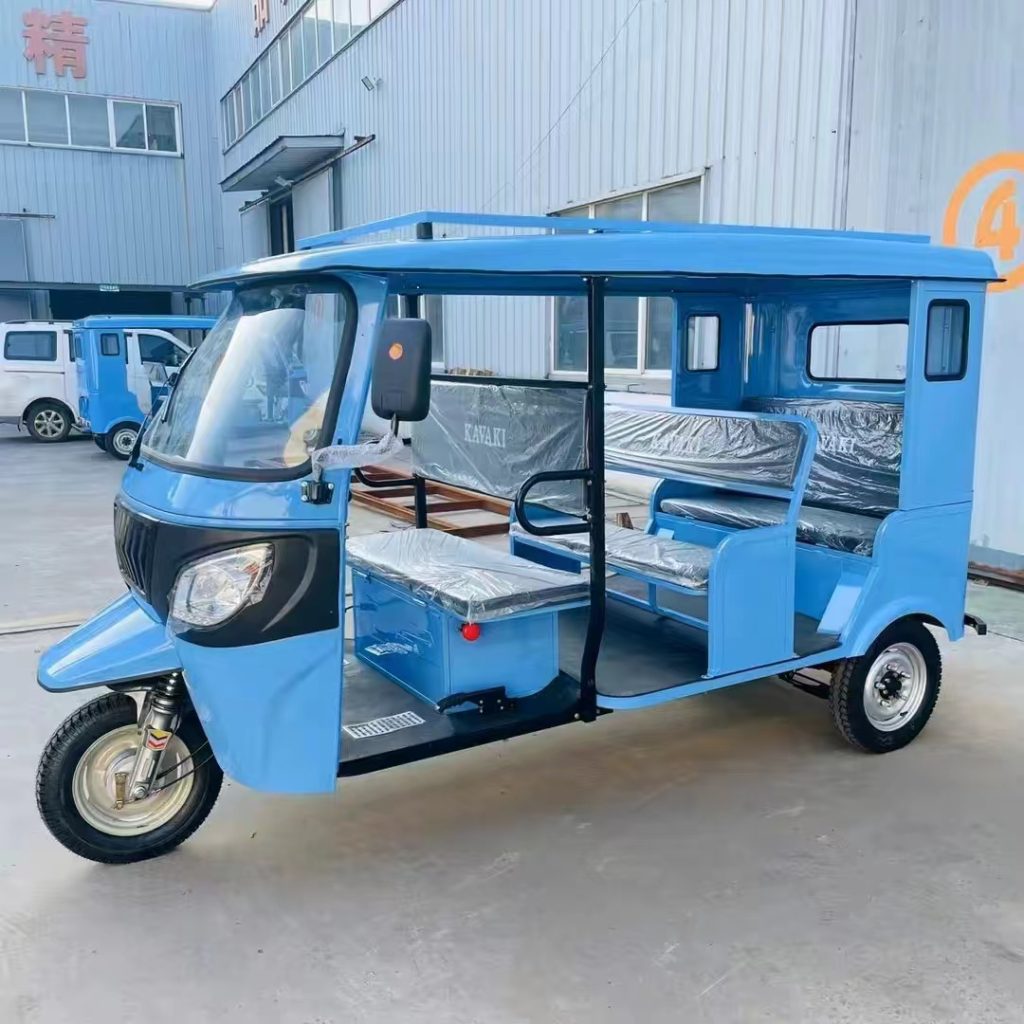The emergence of electric tricycles in urban mobility
Faster urbanization has created the need for creative transport solution plans in modern cities, while electric tricycles are proving to be a revolutionary force. Unlike traditional vehicles, electric passenger tricycles provide a green, economically highly efficient, and versatile form of transportation, which is particularly suitable for traffic-congested urban environments. Electric tricycles combine the versatility of bicycles with the stability and passenger-carrying ability of small cars, thereby becoming perfect choices for short-distance travel and last-mile delivery services.
People transport is being more and more used by governments and companies using electric tricycles, valuing their convenience in carbon footprint savings and traffic decongestion. Electric tricycles are no longer an uncommon sight in Asian, African, and even European cities, being used as shared taxis, school buses, and even mobile vending carts. The modular nature allows city specifications to be tailored–the transport of passengers or the transport of goods.

Benefits over traditional traffic modes
As compared to traditional vehicles, electric tricycles possess the following notable benefits:
- Environmental Friendliness: No exhaust emissions, significantly improving urban air quality.
- Economic Efficiency: Reduced operating and maintenance expenses when compared to gasoline vehicles and motorbikes.
- Nimbleness: A Compact body can freely navigate narrow streets and lanes, solving the problem of large vehicle passage.
- Inclusivity: Electric passenger tricycles provide stable and slow-speed transport for the elderly and mobility-impaired.
It must be added that the incorporation of advanced energy storage technologies such as lithium-ion batteries and solid-state batteries has been able to improve the range and charging performance, overcoming the main limitations of initial models.
Prospects of electric tricycles
The development trend of electric tricycle for people transportation is one of exponential growth. Emerging technologies such as replaceable battery packs, AI-optimized routes, and solar charging will continue to expand their use. Some future cities are already starting to plan for special lanes and charging station networks to enable the expansion of new modes of transportation.
In addition, with the advent of Micro Mobility as a Service (MaaS), electric tricycles will be integrated into ride-hailing services and offer on-demand and affordable mobility choices. All countries are also improving regulatory interventions and making vehicles compatible with modern urban transport requirements through standardized safety configurations.

Conclusion: A Sustainable Transformation in Urban Mobility
The popularity of electric tricycles represents an underlying revolution of urban transport models. With the fusion of sustainability, accessibility, and usability, they provide a compelling alternative to traditional models of mobility. As urbanization accelerates, the mass adoption of electric passenger tricycles can contribute significantly towards the development of greener, smarter cities. The future of urban transportation is not just electric—it’s three-wheeled.

 Instant
Quote
Instant
Quote Email
Us
Email
Us